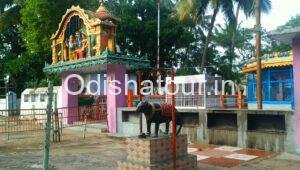The fort of Potagarh was the first Collectorate complex of Ganjam. Later on, it was shifted to Berhampur in 1815 and subsequently to Chhatrapur in 1835, where it is continuing till today. Potager or the “buried fort” is named as such since it is buried. It is situated at present near a village named Ganjam between 180 15′ and 200 15’N. Latitude and 830 49′ and 850 15′ E. Longitude on the fort of Potagarh was the first Collectorate complex of Ganjam. Later on, it was shifted to Berhampur in 1815 and subsequently to Chhatrapur in 1835, where it is continuing till today. Potagarh or the “buried fort” is named as such since it is buried.
It is situated at present near a village named Ganjam between 180 15′ and 200 15’N. Latitude and 830 49′ and 850 15′ E. Longitude on the mouth of river Rushikulya. The fort is in ruins and still, it stands as the mute witness to many rulers, who have used it as their administrative Headquarters to rule over this region named in different periods as Kalinga, Kalinga Dandapat, Ganjam, Chichacole Circar etc.
Potagada fort
The compound wall is about 8′ thick with a moat encircling it. Potagada Fort has two nicely designed doors, one is on the front side the other one is on the back side, close to the river. The fort of Potagarh is described by the celebrated historian W.W. Hunter as having towers in the star angles except in the east front where there is a large gateway.
The walls are neither under 18 nor above 22 feet in height and a ditch runs in three sides in many parts with deep water and in the fourth side defended by a thick wood which runs to 150 yards from the walls”. Potager tells many stories of horror relating to the wrath of the fort-goddess on the ancient village of Ganjam and the escape of the king through the secret passage into the Bay of Bengal by a boat at the time of the attack. Fort Potagarh is an archaeological asset of the state and deserves preservation. Potagada fort is a tourist attraction places in Berhampur, Ganjam Source


















































